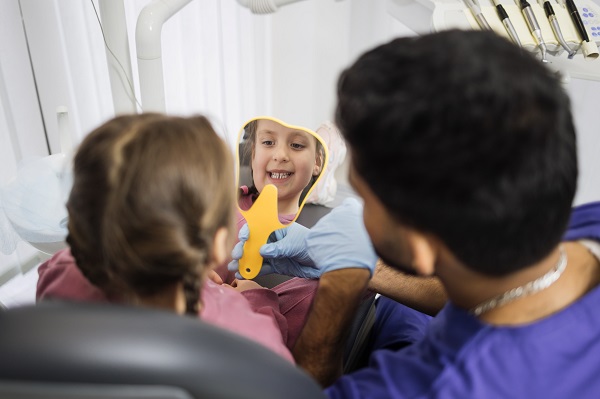Pediatric Dental Emergency: Cracked Tooth FAQs

An emergency pediatric dentist provides urgent care for issues like cracked teeth. Minor cracks that only affect a tooth's outer layer do not require emergency care, but they still need to be treated since they leave teeth vulnerable to decay and weaken them.
Severe cracks that open up a tooth's pulp chamber are classified as dental emergencies since they typically come with intense pain and leave teeth prone to infection. Infected teeth can be easily treated with procedures like root canals, but the infection can spread to other parts of the body, like the brain, when left untreated.
Our emergency pediatric dentist goes over frequently asked questions about treating cracked teeth
Let us go over some of the questions you might have about getting emergency care for your child's cracked teeth:
1. My child just fell and cracked their tooth; what should I do?
If your child has a cracked tooth, the best thing to do is seek emergency dental care immediately. A pediatric emergency dentist will be able to assess the damage and determine the best course of treatment. In some cases, the tooth may need to be extracted; however, if the tooth can be saved, the emergency dentist will work to repair it.
2. What are some common symptoms of a cracked tooth?
Several symptoms can indicate a cracked tooth, including pain when chewing or biting, sensitivity to cold or hot temperatures, and swelling around the affected area. If you notice any of these symptoms, it is vital to seek emergency dental care as soon as possible.
3. My child's tooth is only cracked on the surface; does this require emergency care?
While minor cracks that only affect the enamel do not typically require emergency dental care, it is still essential to have them treated by a pediatric dentist. If left untreated, these cracks can lead to decay and further damage to the tooth.
4. What are some common treatments for a cracked tooth?
The most common treatment for a cracked tooth is a root canal, which involves removing the damaged tissue from the pulp chamber and sealing off the area to prevent infection. In some cases, a crown may also be placed over the tooth to protect it from further damage.
5. My child's tooth is severely cracked; is there anything that can be done to save it?
Sometimes, a severely cracked tooth may need to be extracted. However, if the emergency dentist determines that the tooth can be saved, appropriate treatments will be recommended. In some cases, this may involve performing a root canal and placing a crown over the tooth.
6. My child has a cracked tooth and is in pain; what can I do to help them?
If your child is in pain due to a cracked tooth, you can give them over-the-counter pain medication like ibuprofen or acetaminophen. You should also avoid giving them hard or chewy foods, which can exacerbate the pain.
7. Will my child need to see a dentist after their emergency visit?
Yes, following up with a pediatric dentist after an emergency visit is crucial. The emergency dentist will provide you with a treatment plan and may refer you to a specialist for further care.
Get emergency care for cracked teeth
Give us a call or stop by our Richmond clinic to set up an appointment with our emergency pediatric dentist if your child has a cracked tooth.
Request an appointment here: https://www.grandparkwaypediatricdental.com or call Grand Parkway Pediatric Dental at (832) 222-8687 for an appointment in our Richmond office.
Check out what others are saying about our services on Yelp: Emergency Pediatric Dentist in Richmond, TX.
Recent Posts
Dental caries, commonly known as tooth decay or cavities, are a prevalent dental problem among children. Composite fillings are one great solution to this often painful and sensitive issue. Composite fillings work to stop tooth decay in its tracks while still allowing filling recipients to maintain a more natural-looking smile.Composite fillings, composite resin fillings, or…
Tooth-colored fillings are used to fill in holes in the teeth caused by decay. The pediatric dentist will mold the fillings out of composite resin. Once the dentist cleans the tooth's cavity, they fill and close off the hole with the filling. The fillings match a patient's natural teeth to ensure a natural-looking smile. In…
Composite fillings, especially newer ones, are strong and durable but can wear out over time. The excess pressure from grinding teeth can cause them to wear out more quickly. In addition, poor dental hygiene may contribute to decay, compromising fillings. A loose filling is not a dental emergency but requires attention as soon as possible…
A bright and healthy smile is an important part of a child's oral and social development. However, parents may wonder if teeth whitening for kids is a safe and gentle treatment option to improve the appearance of their little one's teeth. While adults have many whitening options, there is some caution that parents should take…


